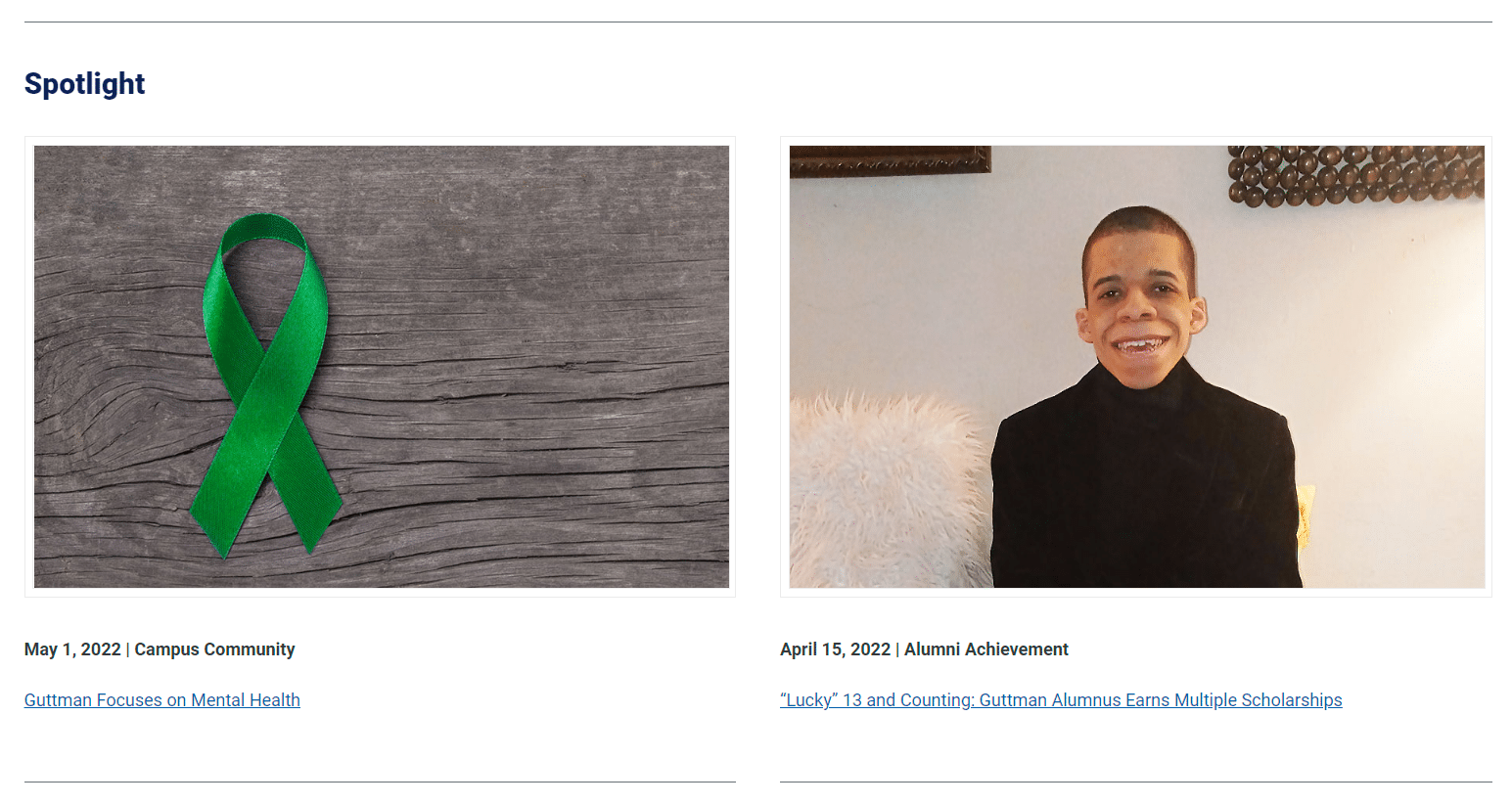Scaling AI Fluency for Marketing Teams: How ASU Leads with Innovation and Intent
See how ASU is leading AI fluency for marketing teams through leadership buy-in, innovation challenges, and custom tools that drive real, campus-wide impact.
Marketing Strategies
Can community play a role in producing higher graduation rates? I certainly think so.
While many four-year institutions have always enjoyed solid graduation rates at around 63%, graduation rates for community colleges historically are in the teens, if not in the single digits.
That’s why I was so impressed to see Guttman Community College’s unbelievable 30 – 40% graduation rate.
In this episode of The Higher Ed Marketer podcast, Dr. Larry Johnson, College President at Guttman Community College CUNY, walked us through the unique model of Guttman Community College.
He also showed us how building a learning community brings successful outcomes to students.
Here are some highlights from that conversation.
Early in the conversation, Dr. Johnson shared the history and vision of Guttman Community College.
What really stands out to me here is how Guttman began with the whole idea of improving graduation rates in mind.
These successful numbers are not a happy surprise, it was almost by design!
The vision of Guttman Community College was formed around 2008. At the time, CUNY Chancellor Matthew Goldstein charged a team of [education professionals] with understanding what was happening in the higher ed landscape [concerning] graduation and completion. The [concept behind the] formation of Guttman during this time was to dramatically increase graduation rates.
At the time, graduation rates were a little under 30% in the state of New York. In other areas, it was a little under 20%. [The question was] how do we solve the problem of increasing graduation rates for first-time college students? That became the impetus and the focus.
Adding to the already difficult challenge, Guttman has been focusing its enrollment efforts on a minority student population.
Most of these students are first-generation students who need a lot of assistance to make it to graduation.
Fifty-five percent of our students identify as Latinx, so we are federally designated as a Hispanic serving institution. But we’re also a minority serving institution.
A large percentage of our students identify as African American or African. We also have a number of students who are Asian American. So about 90% of our students are from diverse backgrounds.
Together, all of these challenges make the 30 – 40% graduation rate so incredible.

Source: https://guttman.cuny.edu/
So how does Guttman achieve their student outcomes success?
What makes their community college different from others who might even have greater public assistance behind them?
Dr. Johnson attributes their success to Guttman’s first-year experience.
The Guttman model begins with a student going through what we call an “Informational.” When students express interest in Guttman Community College, they are invited to come to a group informational session where they learn about what it means to be a Guttman Grizzly.
But what is really unique is that the first-year students enter into the college as a cohort.
We know that students who remain in a cohort [are more likely to] be successful. They move along together. They have that opportunity to engage [with each other].
In the very first year, the students do not have the option of choosing their courses. The college chooses the courses for the students. [Cohorts] remain together in a house structure. About 25 to 30 students [live] in a house structure.
Those students [in the house structure] are provided a suite of support services where faculty, staff, and student success advocates meet with each of them throughout the week in a learning community fashion to really understand what students are struggling with and how they may need to pivot to ensure those students are successful.
So that has really become the model of success that has helped students in two to three years graduate college, to reach those 40% graduation rates.
This is all the more true in times when we’re a little bit unsure of what we’re getting into.
The cohort model is a brilliant way to help assure the success of the students.
Especially when we’re talking about first generation or minority students, they need a community of people that can help them achieve their success.
I highly recommend considering how the cohort model might just help you achieve better graduation rates for your college or university.
If what we see at Guttman is any indication, intentionally forming communities among students can be a real game-changer.
Like all of our blog post reviews of The Higher Ed Marketer podcasts, there’s so much more to learn in the podcasts themselves.
Later in our interview, Larry explains more how they use social media tools to create community among students at the top of the funnel.
Listen to our interview with Dr. Larry Johnson to get even more insights into:
Then you’ve got to know how to write for the web. That’s why we want to send you our popular ebook: Writing for the Web: 7 Secrets to Content Marketing Success for Education Marketers!
With this helpful resource, you’ll learn how to:
In short, you’ll be able to write the copy that makes your digital marketing strategy work for you. Download your copy today!
Featured image via guttman.cuny.edu
Subscribe to The Higher Ed Marketer podcast today!